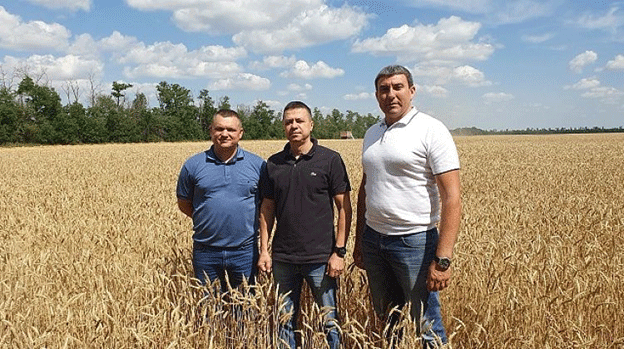In the Kuban region, agricultural enterprises have strategically diversified their wheat varieties to cope with the harsh climatic conditions. This approach has not only bolstered crop resilience but also led to impressive yields, reinforcing the region’s status as a leading agricultural hub.
Agricultural Success in Kuban
Kuban’s farms cover a substantial 529,400 hectares with cereal and leguminous crops, with 257,500 hectares dedicated to wheat. The agricultural holding “Agrocomplex Vysselkovsky” has consistently ranked among the top producers in the region, showcasing the success of its diversified crop strategy.
For instance, in the Vysselkovsky district, the enterprise named after I.P. Revko, directed by agricultural scientist Alexander Starushka, achieved the highest yield in winter barley, harvesting 87.6 centners per hectare from 1986 hectares. Wheat has been harvested from 80% of the areas, maintaining an impressive yield of 76.1 centners per hectare.
Mosaic Strategy in Action
The diverse approach involves planting a mix of six to eight wheat varieties, recommended by academician Lyudmila Andreevna Bespalova. This strategy has proven crucial in regions with varied soil and weather conditions, ensuring that some varieties thrive even when others do not. For example, in Kanivskoy district, the “Kanevskoye” enterprise reached a forage crop output of 91.6 centners, while LLC “AK Pavlovsky” recorded 86.5 centners.
Beside the robust yields of winter barley and the ongoing wheat harvest, the experiment with high-quality wheat varieties, led by the National Grain Center (NGC), is noteworthy. The “Agrocomplex Vysselkovsky” has undertaken the expenses for these trials, showcasing their commitment to innovation and scientific collaboration.
Challenges and Variability
Despite these successes, the region faces challenges. Pea yields, for instance, have dropped to 25.8 centners, significantly below last year’s 40.4 centners due to adverse weather conditions. Winter wheat, however, shows promise, with fluctuating daily yields reflecting the sensitivity of crops to weather changes. After harvesting every hundred thousand hectares, yields vary, demonstrating the resilience of some varieties to drought while others struggle.
Scientific Collaboration and Technological Integration
Director of Plant Production at “Agrocomplex Vysselkovsky,” Savva Shevel, emphasized the role of scientific collaboration in their success. The integration of innovative technologies and close cooperation with scientists from the National Grain Center and Kuban State Agrarian University have been pivotal. This collaboration is further strengthened by the leadership of Evgeny Khvorostin and Alexander Kvashin, who have firmly committed to enhancing ties with scientific communities.
Chief agronomist Sergei Pavlovich Kapralov’s recent defense of his doctoral thesis at Kuban State Agrarian University underscores the importance of ongoing research and development in agricultural practices. This commitment to scientific excellence and innovation ensures the continuous improvement of crop yields and resilience.
Kuban’s strategic use of diverse wheat varieties and strong collaboration with scientific institutions have led to remarkable agricultural successes. The mosaic strategy not only mitigates risks posed by extreme weather conditions but also ensures consistently high yields, reinforcing Kuban’s position as a leader in agricultural production. As the harvest season progresses, the region anticipates completing the wheat harvest with a projected average yield of 64.8 centners per hectare, a notable increase from the previous year.
Error





